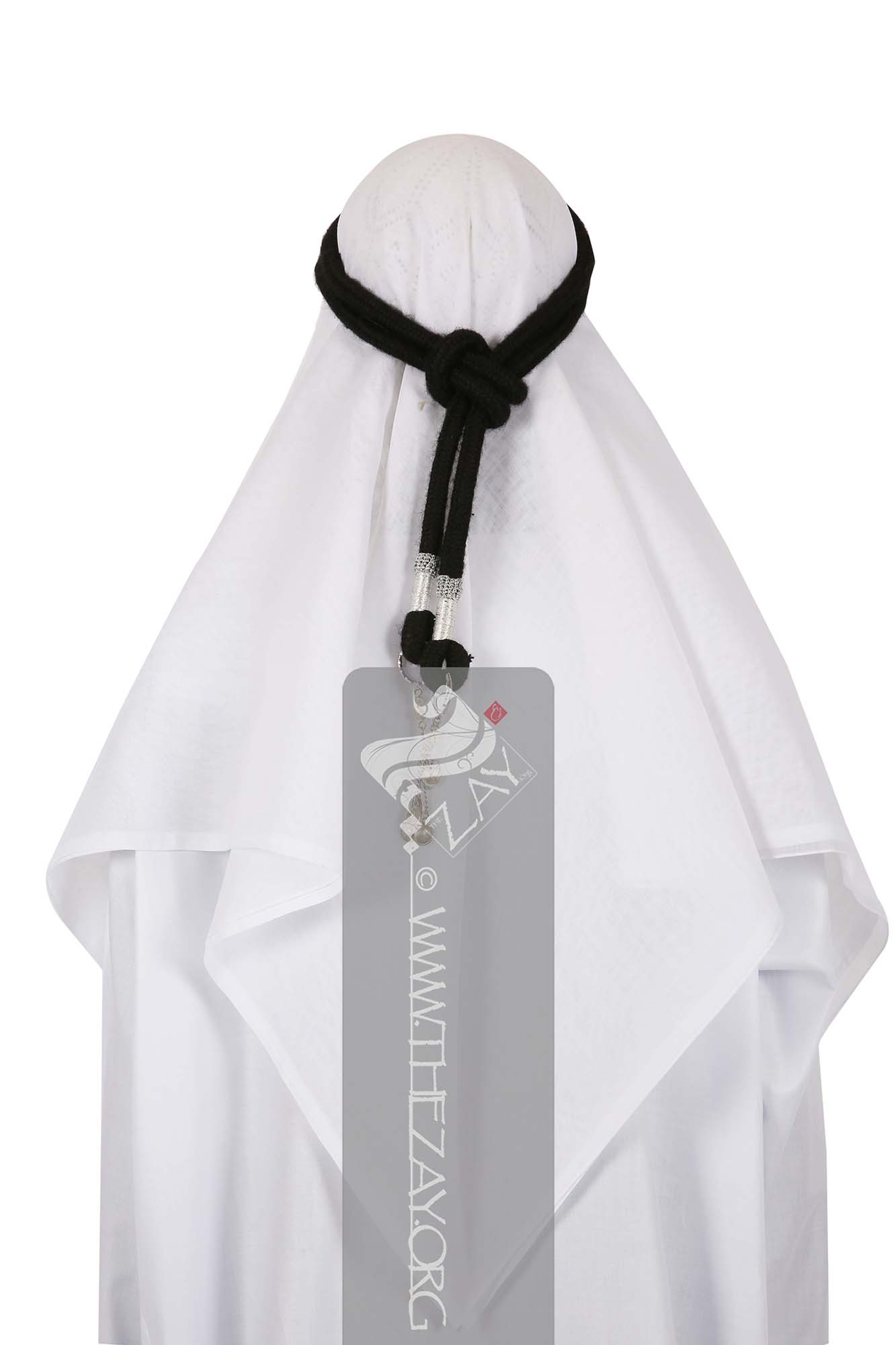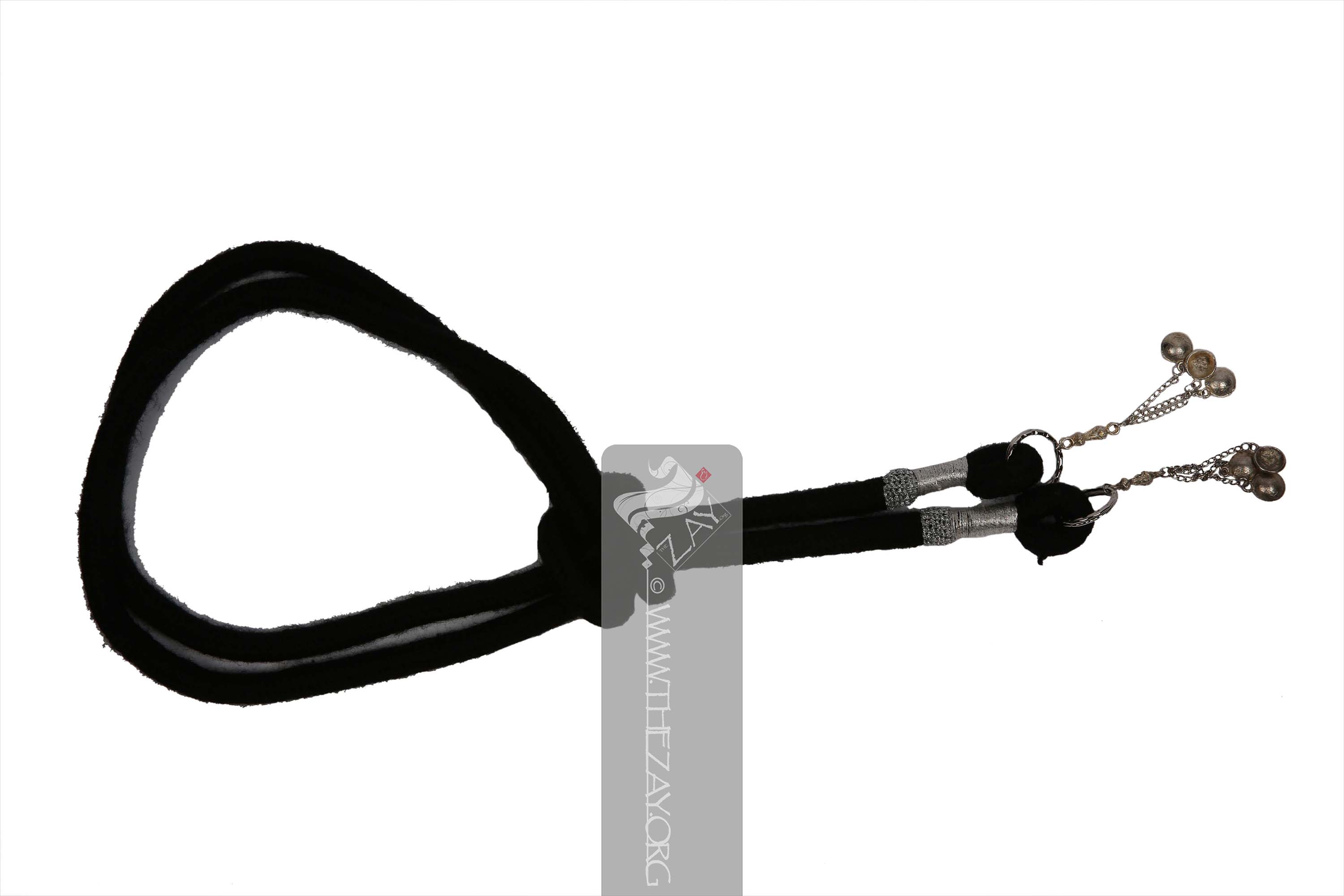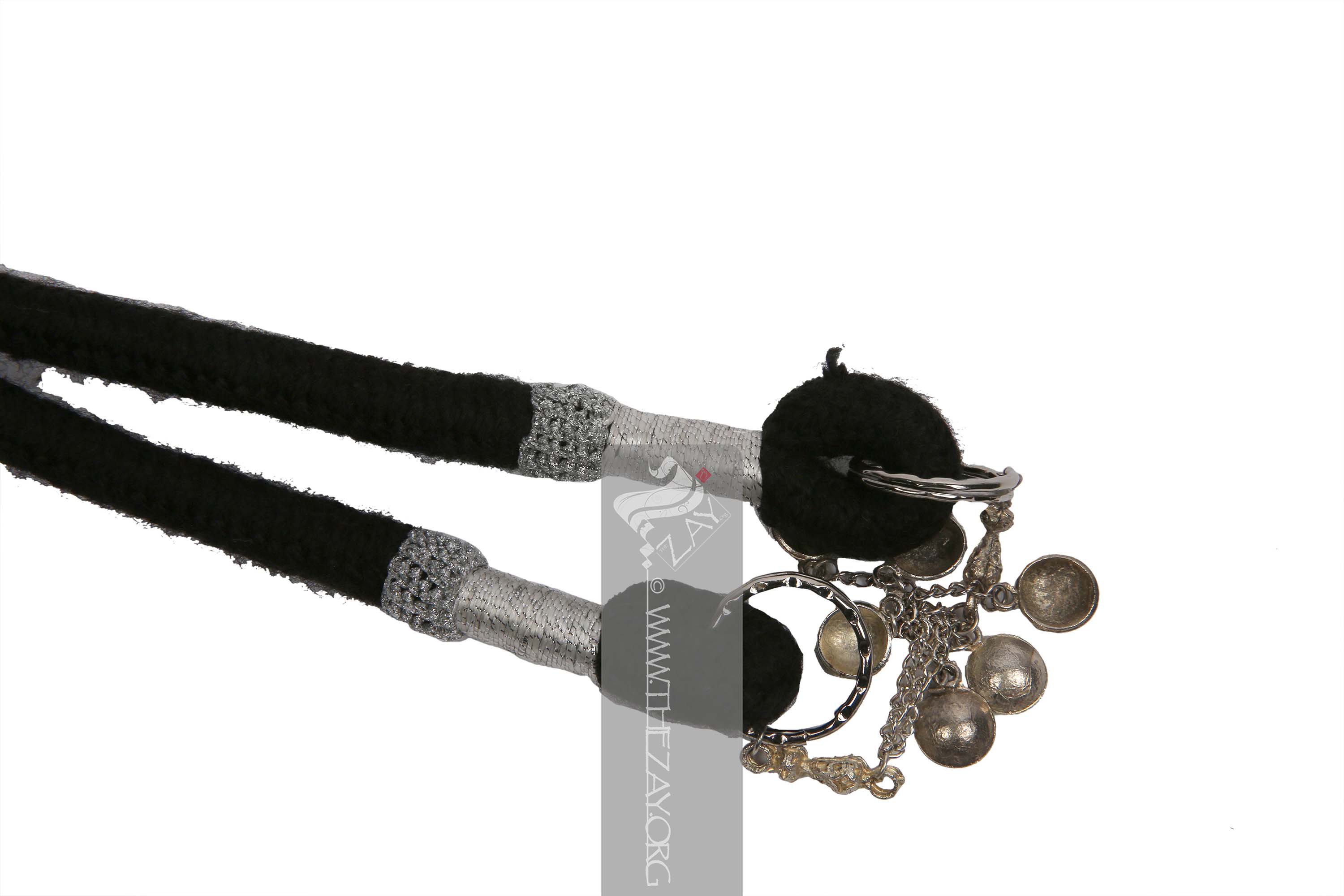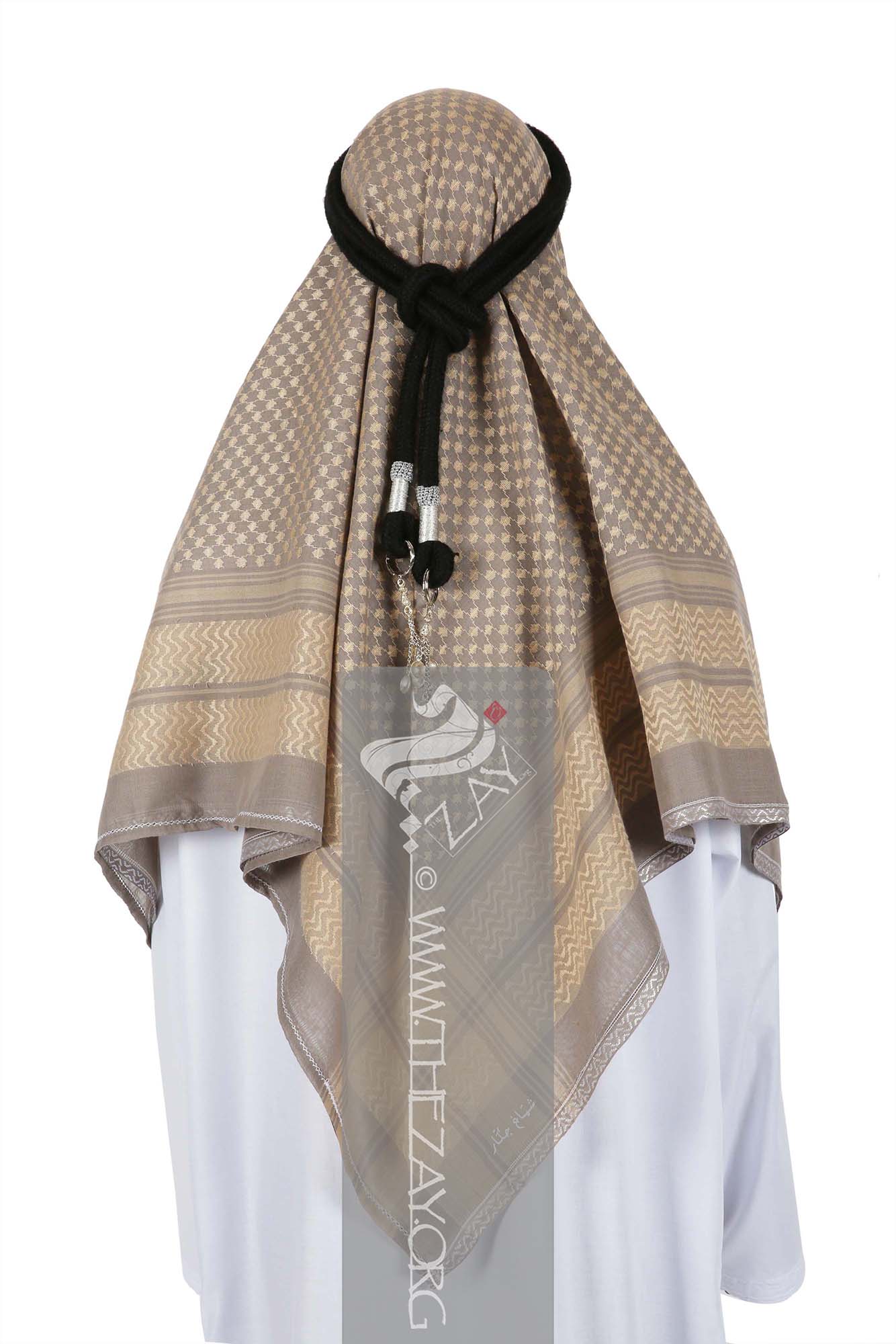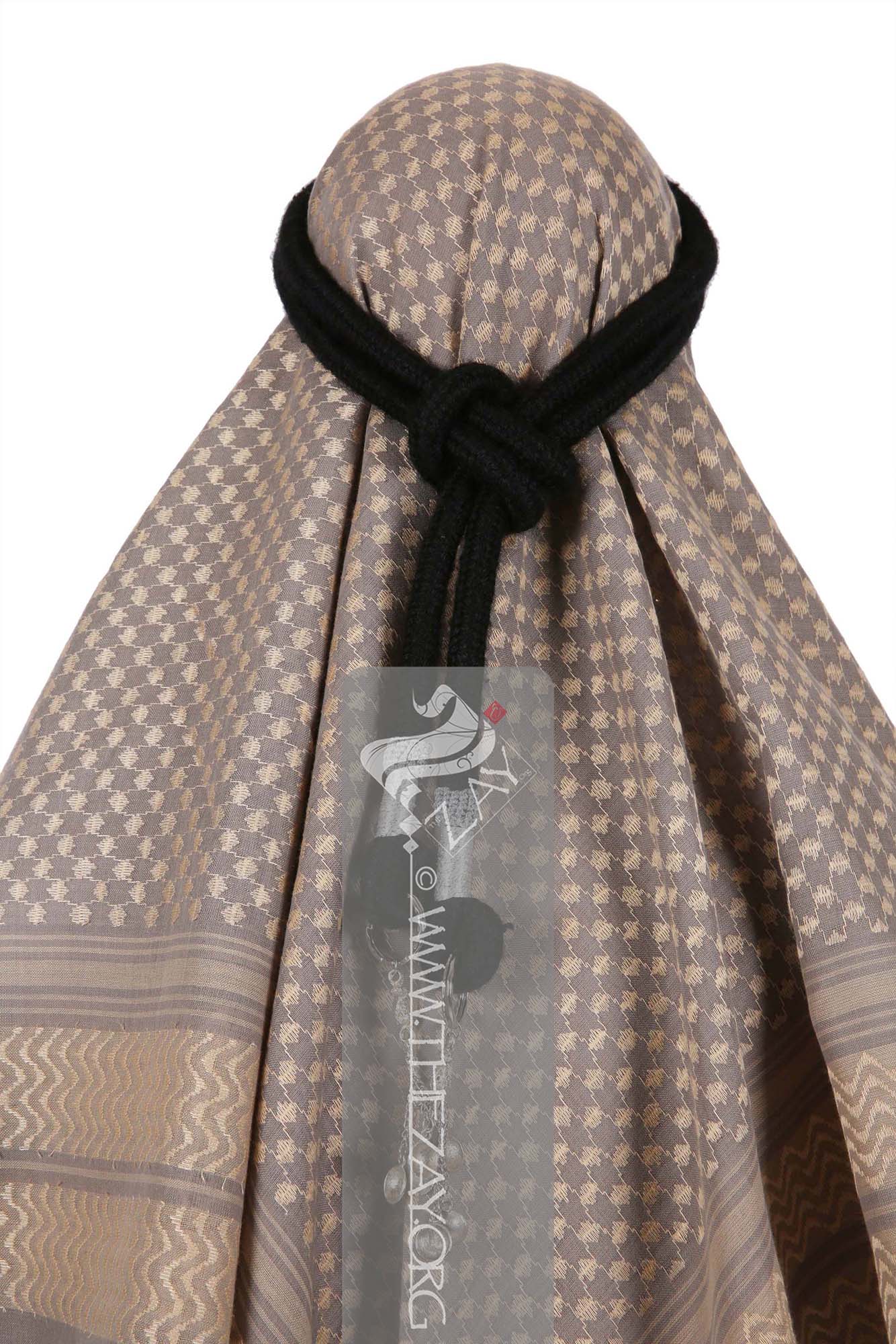Object History Dr. Reem Tariq
Ṭariq: (Arabic; Synonym: tulle_bi_talli
Tūlle_bi_tallī: (French: Tulle – a city in France where fine material for veil was first made; Turkish: tel – wire; Synonym: tariq; talli; badla; khus_dozi ), series of small metal knots made on a woven net ground as embellishment. The term is commonly used in the North African Arab region specifically in Egypt.
; talli; badla; khus_dozi ), series of small metal knots made on a woven net ground as embellishment. The term is commonly used in the Levant Arab region specifically in Lebanon.
El Mutwalli
Dr. Reem Tariq
Ṭariq: (Arabic; Synonym: tulle_bi_talli
Tūlle_bi_tallī: (French: Tulle – a city in France where fine material for veil was first made; Turkish: tel – wire; Synonym: tariq; talli; badla; khus_dozi ), series of small metal knots made on a woven net ground as embellishment. The term is commonly used in the North African Arab region specifically in Egypt.
; talli; badla; khus_dozi ), series of small metal knots made on a woven net ground as embellishment. The term is commonly used in the Levant Arab region specifically in Lebanon.
el Mutwallī: Founder (CEO) of the Zay
Zay: (Arabic: costume, Pl. azyaā’), a set of clothes in a style typical of a particular country or historical period. Initiative, a public figure, speaker and author. An expert curator and consultant in Islamic art and architecture, interior design, historic costume, and UAE heritage., The
Zay
Zay: (Arabic: costume, Pl. azyaā’), a set of clothes in a style typical of a particular country or historical period. Initiative founder was initially contacted on Instagram by Mariam Khalfan Mohammed Khalifah al Maydi al Badwawi, who offered to volunteer and help source old artifacts from the Northern Emirates for the
Zay
Zay: (Arabic: costume, Pl. azyaā’), a set of clothes in a style typical of a particular country or historical period. Collection. Mariam has been an invaluable addition to our team, as she connects easily with people and patiently explains our role, convincing others to help the cause. This (
kandurah_arabiyah
Kandūrah_‘arabīyah: (colloquial Emirati term), coined post 1990s, to refer to the qamīs-like tunic with vertical slit located on the left side of the neckline extending down the chest. The origins of this slit are believed to lie in the Punjabi (kurta
Kūrtā: (Urdu and Persian: kurtah
Kurtah: (Urdu and Persian: kurta, synonyms: bīchī, gawan, fustān, nafnūf, kirtah), a loose sleeveless shirt of varying lengths, typically falling either just above or somewhere below the knees, with its side-seams left open at the bottom, worn in South Asia, usually with a salwar
Salwar: (Farsi: shalvār; Synonym: ṣarwāl, shirwāl ), trousers featuring tapering ankles and drawstring closure of Central Asian origin. They disseminated in the Indian subcontinent between c.1st-3rd century BCE. Although exact period of its arrival in the Arab world is disputed their widespread adoption is confirmed from the 12th century.
, churidars, or pyjama. In Hijazi dialect, the term refers to a sleeved, waist-cinched dress that comes in different styles, popularly worn since the 1950s.). a sleeveless shirt of varying length, typically falling either just above or somewhere below the knees of the wearer, with its side-seams left open at the bottom.) and is generally fastened using cotton thread ball-like buttons ('igham), or metal snaps (siq_w_bic) which were subsequently replaced by transparent versions.ly replaced by transparent versions. khwar_zari) is one of her finds.
Mariam came across this article together with a few more from the late Mohammed ‘Ayish al Qaydi, who passed away in the 1990s. Fortunately, his family held on to them and were willing to sell them to The
Zay
Zay: (Arabic: costume, Pl. azyaā’), a set of clothes in a style typical of a particular country or historical period. Initiative.
Object Features Historically, the (‘igal) was used to tie the legs of the camel to pin it down to the ground. Together with the headdress (
kufiyah
Kūfīyah: (Arabic: takwīf: round), a large square piece of woven cotton with white base, folded in half to form a triangle. The folded edge is worn across the forehead fastened by a cord (‘iqal) and draped off the shoulders. It often has geometric embroidery in a square-like pattern, the most famous being red and black. Worn in the Levant, Iraq, and the Arabian Gulf and known as (shmāgh), (ghutrah), (haṭṭah), (mshadah
Mshadah: (Arabic: shadda: tied tightly, synonyms: kūfīyah, shmāgh, ghutrah, ḥaṭṭah, qaḍāḍah, jamadānah), a large square piece of woven cotton with white base, folded in half to form a triangle. The folded edge is worn across the forehead. It often has geometric embroidery in a square-like pattern, the most famous being red and black. Worn in the Levant, Iraq, and the Arabian Gulf.), (qaḍāḍah), or (jamadānah).) or (
shmagh
Shmāgh: (Sumerian: ish makh: headcover, synonyms: kūfīyah, shmāgh, haṭṭah, mshadah, qaḍāḍah, jamadānah, ghutrah) a large square piece of white-based woven cotton, folded in half to form a triangle. The folded edge is worn across the forehead fastened by a cord (‘iqal) and draped off the shoulders. It often has geometric embroidery in a square-like pattern, the most famous being red and black. Worn in the Levant, Iraq, and the Arabian Gulf. ), both can be traced back to Semitic and Middle Eastern civilisations based on old Babylon artifacts such as Elamite coins and figures and even in ancient Arabian kingdoms, and dated through antiquities including bas-reliefs and statues going back to ancient times.
This two-looped coil of black braided cord (‘igal) is worn doubled and used to keep the male headdress (
ghutrah
Ghutrah: (Arabic: qatrah: hunting lodge, synonyms: kūfīyah, shmāgh, haṭṭah, mshadah
Mshadah: (Arabic: shadda: tied tightly, synonyms: kūfīyah, shmāgh, ghutrah, ḥaṭṭah, qaḍāḍah, jamadānah), a large square piece of woven cotton with white base, folded in half to form a triangle. The folded edge is worn across the forehead. It often has geometric embroidery in a square-like pattern, the most famous being red and black. Worn in the Levant, Iraq, and the Arabian Gulf., qaḍāḍah, jamadānah), a large square piece of woven cotton with white base, folded in half to form a triangle. The folded edge is worn across the forehead fastened by a cord (‘iqal) and draped off the shoulders. It often has geometric embroidery in a square-like pattern, the most famous being red and black. Worn in the Levant, Iraq, and the Arabian Gulf.) in place on the wearer's head. It is heavy and coarse enough to keep a grip on the (
ghutrah
Ghutrah: (Arabic: qatrah: hunting lodge, synonyms: kūfīyah, shmāgh, haṭṭah, mshadah
Mshadah: (Arabic: shadda: tied tightly, synonyms: kūfīyah, shmāgh, ghutrah, ḥaṭṭah, qaḍāḍah, jamadānah), a large square piece of woven cotton with white base, folded in half to form a triangle. The folded edge is worn across the forehead. It often has geometric embroidery in a square-like pattern, the most famous being red and black. Worn in the Levant, Iraq, and the Arabian Gulf., qaḍāḍah, jamadānah), a large square piece of woven cotton with white base, folded in half to form a triangle. The folded edge is worn across the forehead fastened by a cord (‘iqal) and draped off the shoulders. It often has geometric embroidery in a square-like pattern, the most famous being red and black. Worn in the Levant, Iraq, and the Arabian Gulf.) and prevent it from slipping. The diameter of the (‘igal) is smaller than the head, thus the weight is essential to hold it centred on top of the head.
At the back some versions might have one or two long cords ending with a tassel, I this example, uncharacteristically, metal silver chains ending with three dangling silver balls are used.
Customarily made of goats' wool, where the most expensive forms are those made of Iraqi wool, and the more affordable ones are made of synthetic yarn. Mostly black in colour as is the case in this example, however, brown, white (worn by religious clerics) red, and gilded versions are known as (
Shatfah
Shatfah: (Arabic; Synonym: aqal, oqal, igal and other regional dialect and spelling variations, mgassab, faisaly), a looped headband often traditionally constructed of animal hair, later silk in corded fashion and gilded silver straw worn by Arab men of affluence as status symbol to keep their head scarves in place.
).




